The rise of remote podcast recording emerged as the perfect solution to bridge the geographical gap between hosts and guests. Even beyond the COVID-19 era, the allure of remote podcast recording continues to captivate podcasters and content creators alike. If you’ve ever wondered how to record your podcast remotely, you’re not alone.
I’m Niall Mackay- The Podcast Guy.
Since the pandemic, many recording software have developed advanced recording remote functionalities to facilitate seamless collaboration between hosts and guests, regardless of their geographical locations.
If you’re new to remote recording and haven’t explored its potential yet, fear not! In this guide, I’ll walk you through the process of harnessing these cutting-edge recording tools to create captivating podcasts with ease. You will discover how these innovative technologies enable you to connect with guests from around the world
Get ready to break free from traditional constraints and embrace the future of podcasting in this ever-changing landscape.

Importance of Remote Podcast Recording
In recent times, the world of podcasting has witnessed a remarkable shift towards remote recording, driven by the outbreak of the global pandemic. While the world is returning to normalcy, the practice of remote podcasting continues to hold significant value and benefits.
Global Reach and Diversity
One of the most significant advantages of remote interviews is its ability to transcend borders and reach a global audience. With geographical barriers fading away, podcast hosts can effortlessly connect with guests from all corners of the world.
Remote recording has eradicated geographical constraints, allowing hosts to conduct interviews with ease, irrespective of the guest’s location. Whether the guest is in a different country or a different time zone, remote podcasting tools make it possible to bridge the gap effortlessly.
Convenience and Time-saving
Remote recordings eliminate the need for travel and physical meetups, saving time and resources for both hosts and guests. It allows for more frequent and efficient content creation, paving the way for consistent releases and improved productivity.
Without the need for setting up physical recording spaces, hosts can focus more on content preparation and refining their interview techniques. This increased productivity translates to a better overall podcasting experience.
Overcoming Scheduling Challenges
Overcoming scheduling challenges is a key aspect of recording podcasts remotely.
In-person interviews often face scheduling conflicts due to conflicting time zones or busy travel schedules. This flexibility means interviews can be scheduled at the most convenient times for all parties involved, reducing scheduling conflicts and streamlining the recording process.
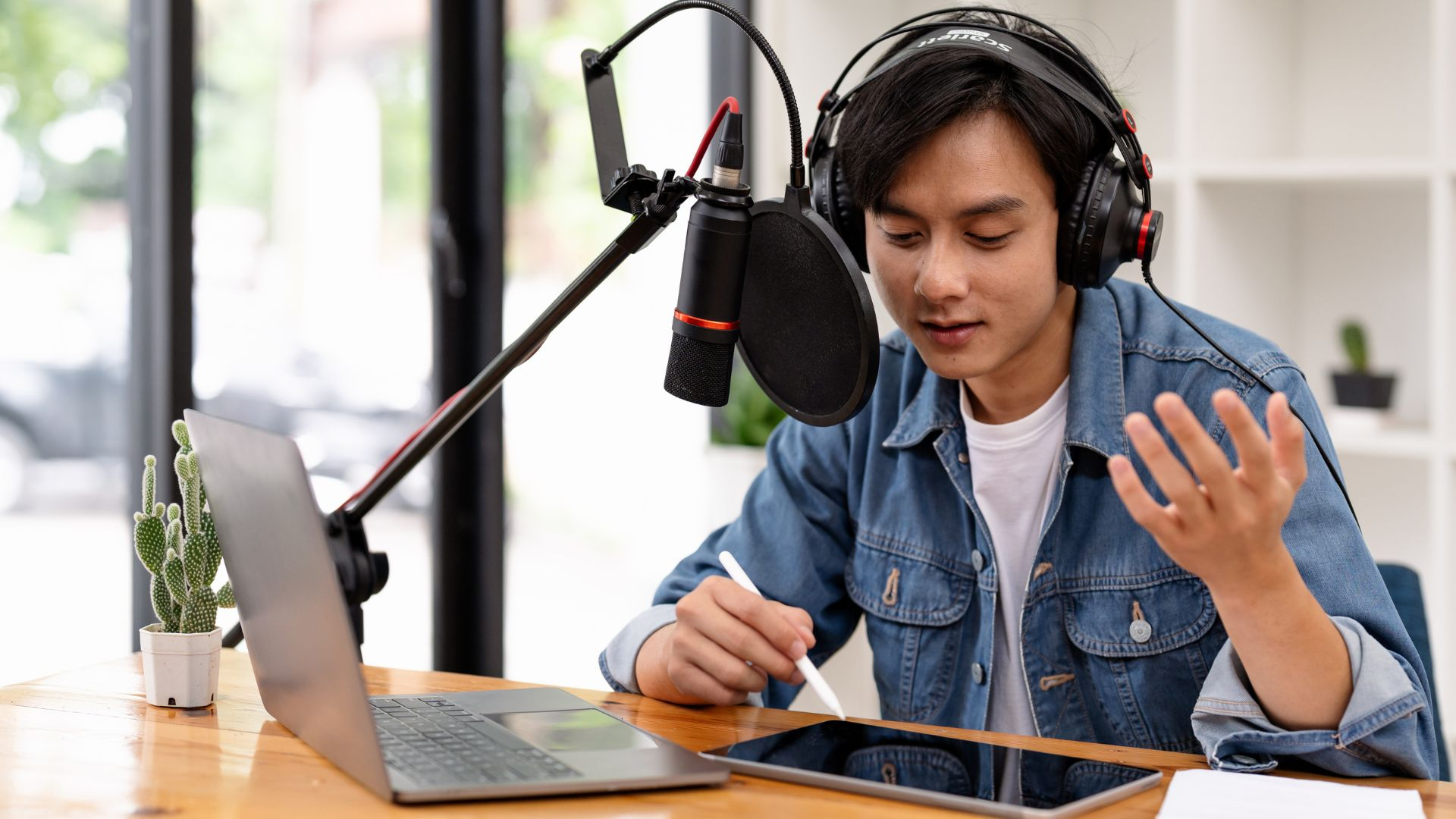
Essential Equipment for Remote Podcast Recording
To record a podcast remotely and achieve high-quality audio files and video podcasts, you should invest in good equipment and set up a conducive recording environment. By having the right tools and a well-prepared setup, you can conduct professional and engaging remote podcast recordings, regardless of geographical distances.
To know what to choose between audio vs video podcast, read my old blog.
Recording Space Setup
The recording space will affect your recording quality. Setting up an appropriate recording space is crucial to achieving high-quality audio for remote podcasting. Whether you’re the host or a guest, creating a suitable environment can significantly impact the overall sound of your podcast.
Find a quiet space with minimal background noise and distractions. Select a room or area where you have control over ambient sounds, such as air conditioners, fans, or outside traffic. A quiet space will ensure that the focus remains on the voices and conversation.
If you plan to include video in your podcast, ensure that the recording space is well-lit with soft and diffused lighting. Avoid harsh, direct lighting that can cast unflattering shadows.

Microphone and Headphones
Podcast Microphones and headphones are essential tools for remote podcast recording because they play critical roles in ensuring high-quality audio and a smooth recording experience.
Microphone
A high-quality microphone is the foundation for recording audio. Look for dynamic microphones, as they are less sensitive to background noise and are suitable for recording in less controlled environments.
Before starting your podcast recording, always conduct sound checks to ensure everything is set up correctly. Check the microphone levels, monitor for background noise, and verify that all equipment is functioning properly. This will save you from potential audio issues during the recording session.
Some examples:
- Audio-Technica ATR2100x-USB
- Samson Q2U
- Rode NT1
- Shure SM7B
Along with a good microphone, there are some accessories that can enhance the sound quality of your recordings:
- Pop Filter/Windscreen
- Boom Arm
- Shock Mount
Remember to educate your remote guests on proper microphone techniques to ensure the best audio quality. Advise them to speak directly into the microphone, maintain a consistent distance, and avoid sudden movements that may create distracting noises.
Headphones
Podcast Headphones allow hosts and guests to monitor their own audio and the audio of others during the recording. In remote podcast interviews, headphones improve communication between hosts and guests, allowing them to hear each other clearly and avoid misunderstandings.
In case of any technical issues with the primary recording, headphones can act as a backup source for audio capture, ensuring the content is not lost.
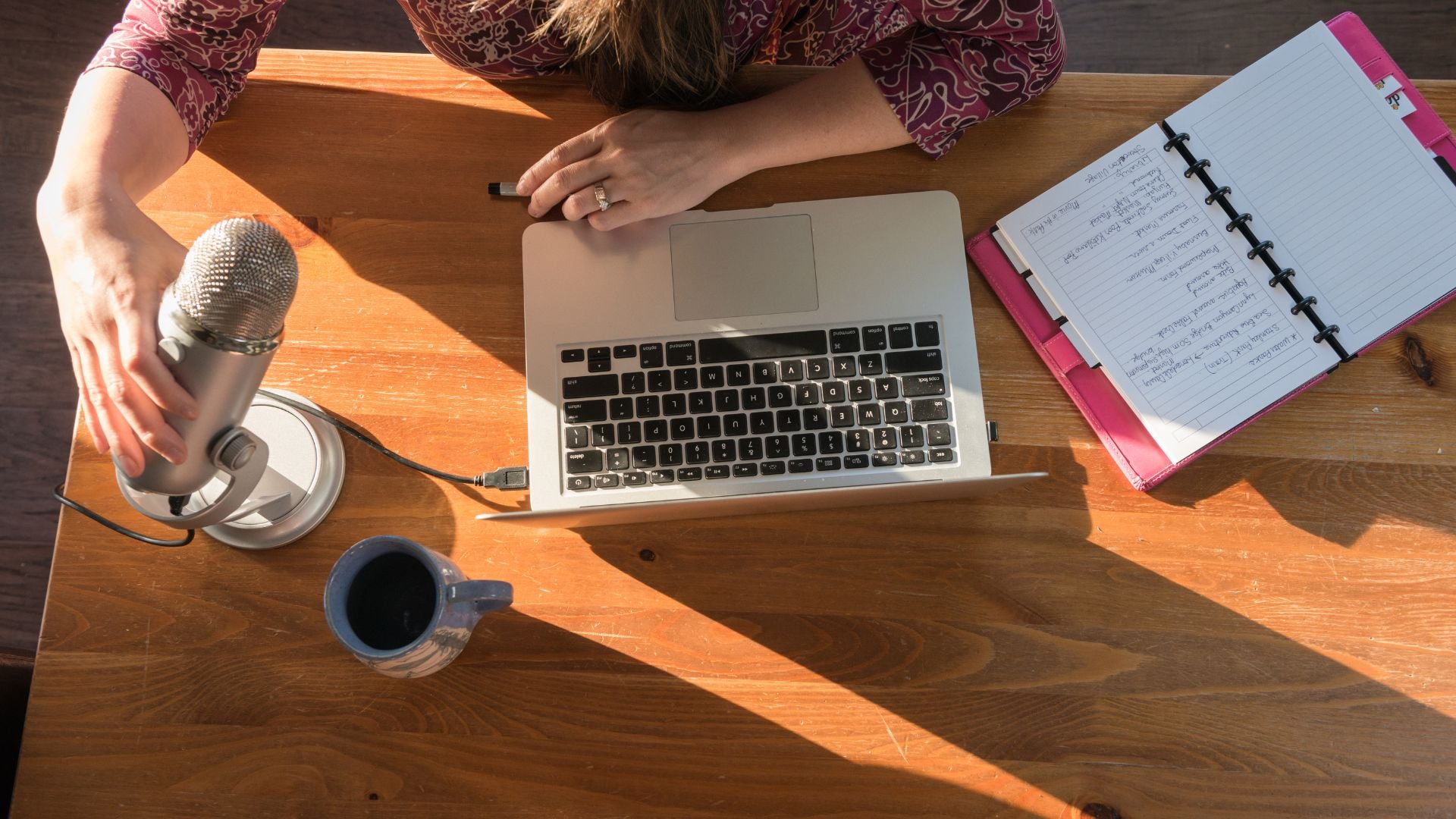
Remote Recording Software
To record high-quality audio, you should choose a suitable recording software. By leveraging the right remote tools, podcasters can seamlessly conduct interviews and collaborate with guests from any location, creating engaging and professional episodes without the need for in-person meetings.
Consider these factors:
- Audio Quality: The most critical factor in recording software is audio quality. Look for platforms that offer high-fidelity audio recording with minimal compression.
- Recording Options: Check if it can record video podcasts or just record audio only. Video recording can enhance the podcast experience, but it may also require more bandwidth and resources.
- Ease of Use: Choose software that is user-friendly and easy to set up for both you and your guests. Complicated software may lead to technical difficulties, which can disrupt the flow of your podcast recording.
To be safe, always have a backup recording in case of any technical issues. You can use a portable recorder or record locally on your computer to have your own audio and video files while simultaneously using remote recording software.
Descript Zoom Remote Recording is my recommendation in these cases.
Best Internet Connection
A stable and high-speed internet connection is crucial for seamless remote recordings. Both you and your guests should have reliable internet connections to avoid dropouts or lag during the conversation. Wired connections generally offer more stability than Wi-Fi, so if possible, opt for a wired connection.
Video Call Platform
Using a video call platform like Zoom or Skype can indeed enhance the remote podcast interview experience, especially when face-to-face interactions are not possible. Video allows podcast hosts and guests to have:
- Non-Verbal Communication: Visual cues, such as facial expressions and body language, play a crucial role in communication.
- Building a Connection: Video calls allow podcast hosts to establish a personal connection with their guests, even when they are in different locations.
- Engaging Conversations: The visual element of video calls can make the interview feel more engaging for both the participants and the audience. It adds a human touch to the podcast, making it more relatable and enjoyable.
However, it’s essential to be mindful of the limitations of video call platforms when it comes to audio quality. While video calls are convenient for communication, they are not designed for studio-quality audio recording. The sound quality of these platforms may suffer from compression, background noise, and dropouts.
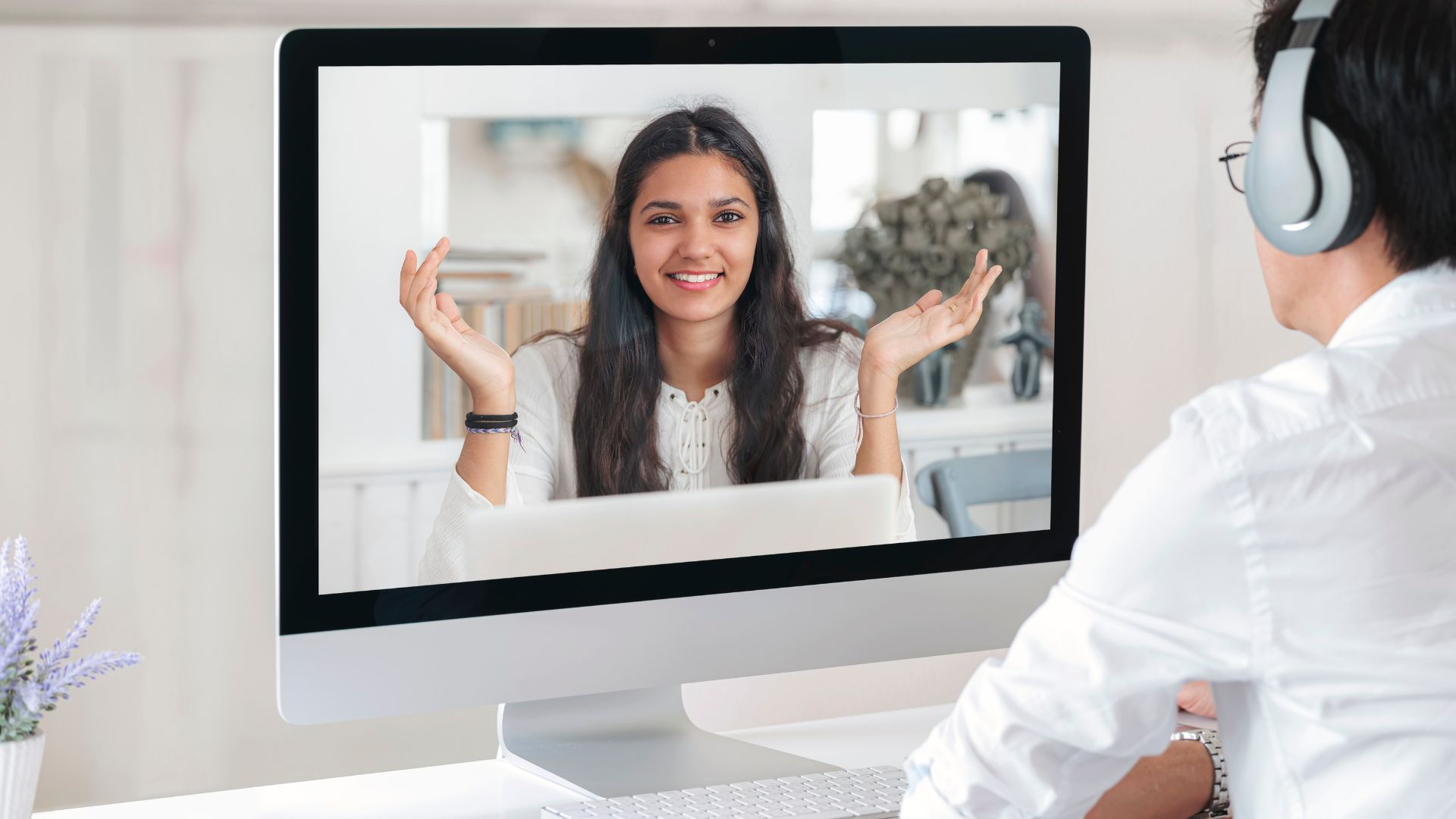
How To Record Your Podcast Remotely
Recording podcast audio remotely has become increasingly common, especially with the rise of remote work and interviews. Maintaining high-quality audio is crucial to delivering a professional podcast. Here are different options for achieving excellent remote podcast recordings:
Double-Ender Recording (Tape-Sync or Simulrec)
The double-ender method, also known as a “tape-sync,” is a tried-and-true technique used by professional podcasters.
- Each participant will record their audio locally on their own equipment.
- The host connects with the guest through a video call platform like Zoom or Skype for real-time communication and visual cues.
- Collect the separate audio tracks from each participant and combine them during the post-production process.
This ensures that each person’s audio is captured at its highest quality without any compression or loss of fidelity.
To implement the double-ender method, you and your guest will need to use your preferred recording equipment, such as a microphone and headphones. Start the recording simultaneously on both ends, either using dedicated recording software or portable audio recorders.
Pros
- Highest quality audio: Each participant records locally, ensuring the best audio fidelity without compression or loss of quality.
- Seamless editing: With separate tracks, you can easily edit and fine-tune each participant’s audio for a polished final podcast episode.
- Reliability: Since each person records independently, technical issues on one end do not affect the other participant’s audio.
Cons
- Setup complexity: Requires coordination and technical knowledge from both the host and the guest to record their audio separately.
- File management: Collecting and handling multiple audio files can be time-consuming, especially when dealing with larger interview panels.
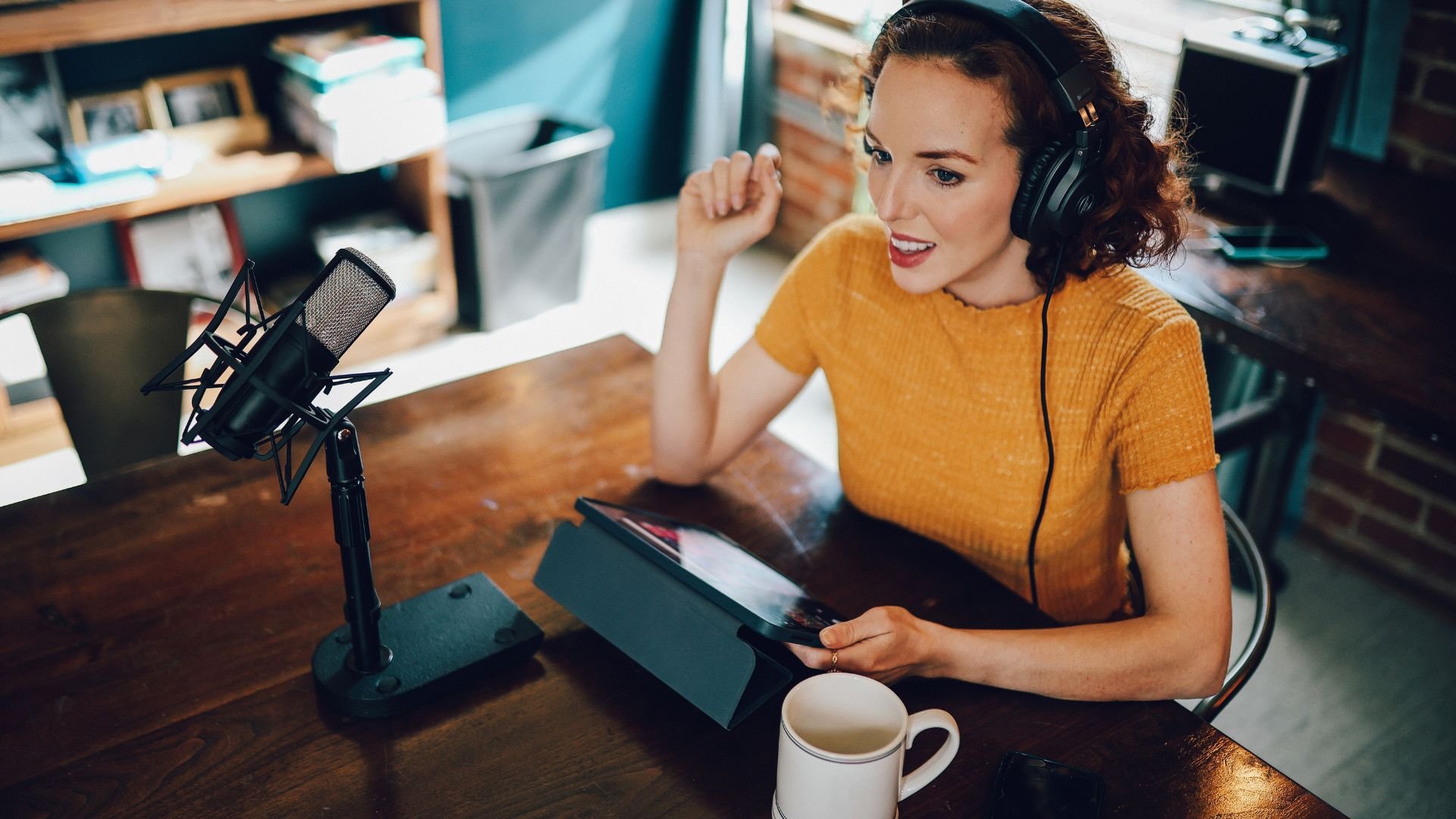
Remote Podcast Recording Software
Some software are specifically designed to facilitate high-quality audio recording for podcasters with guests or co-hosts in different locations. Unlike general video conferencing tools, these platforms prioritize audio quality and offer features tailored to podcasting needs.
With dedicated software, the host and guest can connect through a web browser, eliminating the need for additional downloads. These platforms record each participant’s audio locally, just like the double-ender method, ensuring high-fidelity recordings. The recorded audio files are then automatically synced and stored for easy access and post-production.

Pros
- High audio quality: Dedicated remote recording platforms prioritize sound quality, resulting in clear and crisp recordings.
- Real-time recording: Allows for a smooth conversation with low latency and minimal dropouts.
- Easy to use: Most platforms offer intuitive interfaces, making it simple for guests to join and record.
Cons
- Subscription costs: Some dedicated platforms may require a subscription or charge per recording, adding to the podcasting budget.
- Internet dependency: The quality of the recording relies on stable internet connections for all participants.
Software Recommendation
- :
Riverside is a leading remote recording platform that prioritizes both audio and video quality. It offers a user-friendly interface and provides high-quality, uncompressed audio recordings by capturing each participant’s audio locally. The platform also supports video recording, making it suitable for video podcasts.
- Squadcast:
Squadcast is another popular choice for remote podcast recording, focusing on delivering pristine audio quality. It offers a browser-based solution that requires no additional software installation for guests.
Squadcast ensures separate audio tracks for each participant, making post-production editing more efficient. While it doesn’t currently support video recording, it allows podcasters to see their guests during the recording, enhancing the overall interview experience.
- Zencastr:
Zencastr is known for its ease of use and is a cost-effective option for remote podcast recording. It allows participants to record their audio locally on their devices and then automatically uploads the files to the cloud after the recording session. While it has had some issues with audio drift in the past, it remains a viable option for podcasters on a budget.
Smartphone Voice Memo Apps
For a more straightforward setup, using smartphone voice memo apps can be a viable option. Modern smartphones often have high-quality microphones, making them suitable for recording podcasts remotely. Do you know how to upload voice memo to podcast? Take time to read a detailed guide.
Instruct your guest to use their smartphone’s voice memo app to record their audio while participating in the podcast interview. Afterward, they can share the audio file with you for post-production editing and integration into the final episode.
Pros
- Convenience: Most people have access to smartphones, making it a convenient and accessible recording option.
- Minimal setup: Guests only need their smartphones and headphones, reducing technical barriers.
Cons
- Variable audio quality: While smartphones have improved microphones, audio quality can still vary depending on the device and environment.
- Limited editing options: Voice memo apps may not offer extensive editing features compared to dedicated recording software.
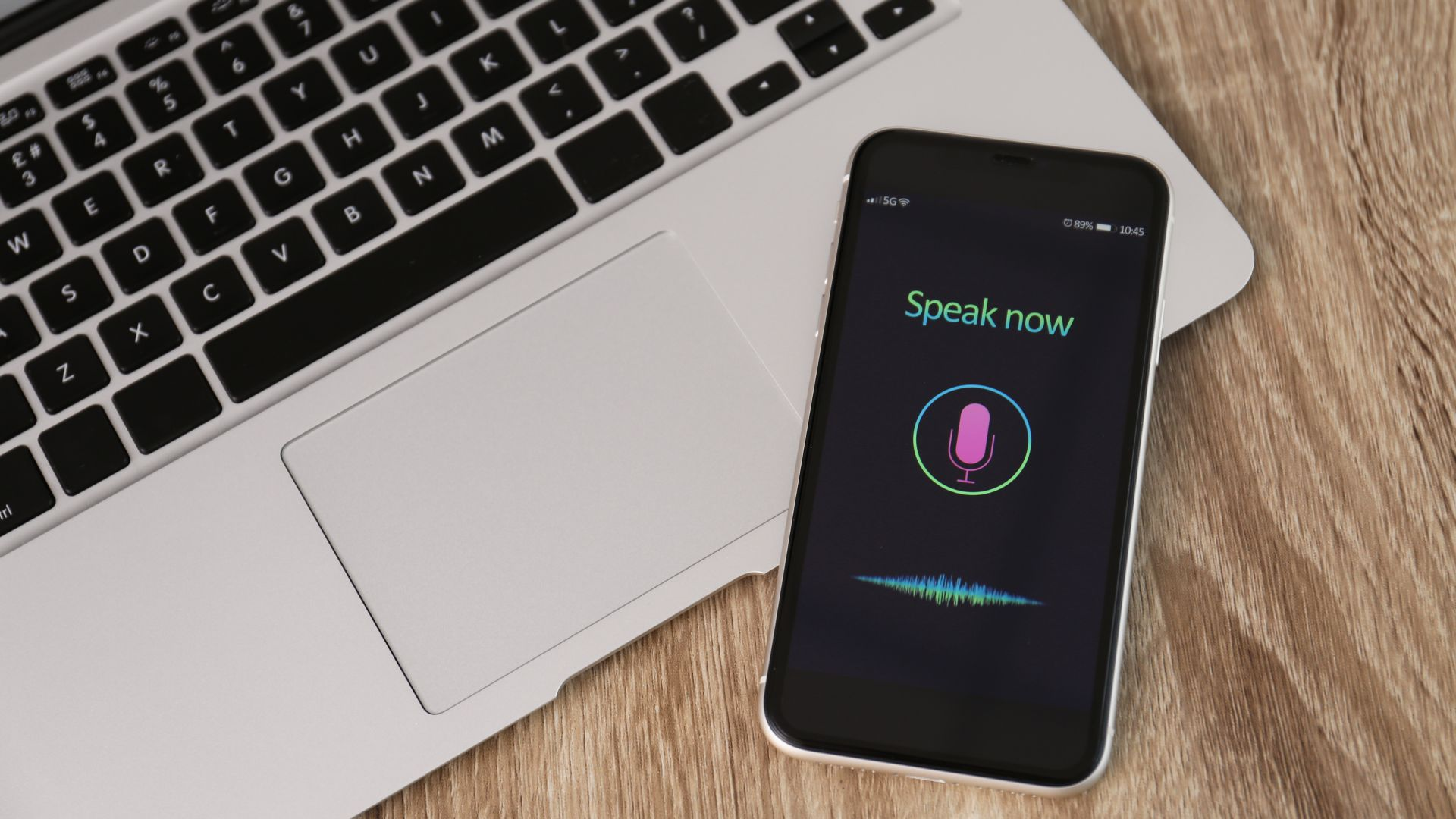
What To Choose?
- The double-ender method provides the highest audio quality and editing flexibility but may require more coordination and technical expertise.
- Dedicated remote recording software offers an excellent balance between audio quality and user-friendliness but it may cost.
- Smartphone voice memo apps are straightforward but may not match the quality of dedicated recording setups.
Consider your podcast’s goals, the technical abilities of your guests, and your budget when choosing the best method for recording your podcast remotely. Regardless of the method, clear communication with your guests and proper preparation is essential to achieving high-quality podcast episodes.
Record A Podcast Remotely Summary
Remote podcast recording has become a vital skill in the ever-evolving landscape of content creation. The convenience, flexibility, and time-saving benefits it offers make it an attractive option for podcasters seeking to connect with guests worldwide without geographical limitations.
As remote work and online collaborations continue to thrive, mastering the art of remote podcast recording remains an invaluable asset for podcasters seeking to engage global audiences and create compelling content from any location.
With careful planning, technical finesse, and a commitment to improvement, podcasters can confidently begin their remote recording sessions and produce captivating podcasts that resonate with listeners worldwide.
Now you are well-equipped, let’s start recording your podcast now!


